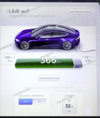Macb00kemdanno
Member
I'm a dumbass! I just realized what the "problem" was. I switched from the 18" Aero wheels to the 19" Sport wheels on Tuesday and updated the wheels in the UI. So it probably is just reflecting the diminished range from the wheel switch. DUH!!the official answer is no but unofficially you will get a very slight drop in rated range in winter months - the cold just means that the battery always rests at slightly lower voltage which means during OVC readings a slightly lower voltage which will be read tesla doesnt compensate for as much. i think this is responsible for a lot of the yoyoing people see on teslafi etc. I dont have this as there is no winter where i live.



